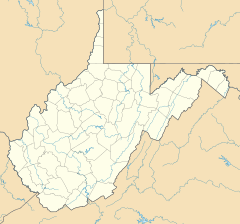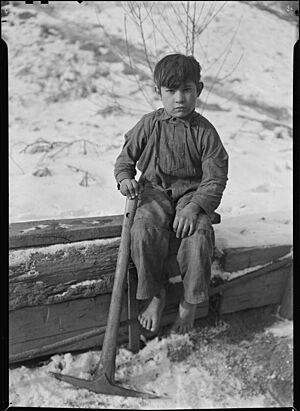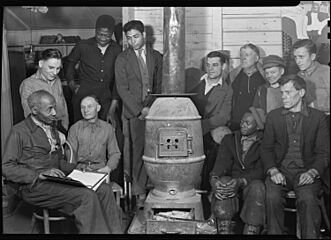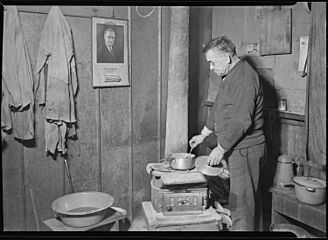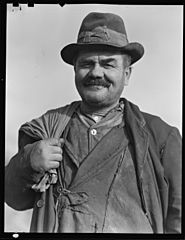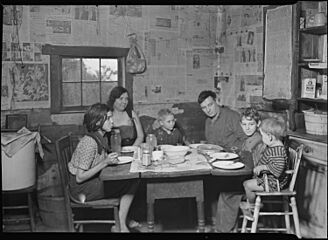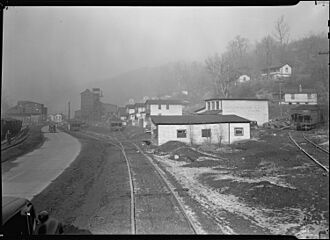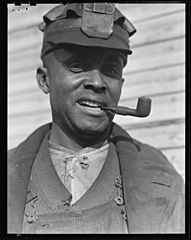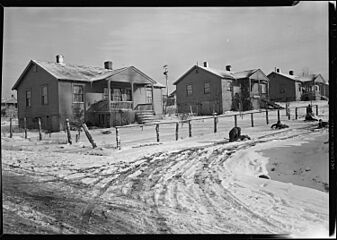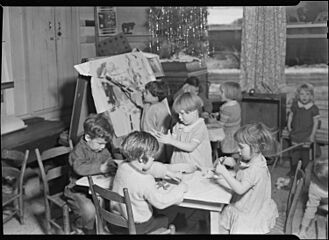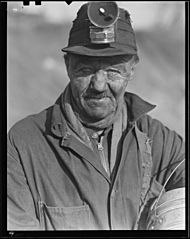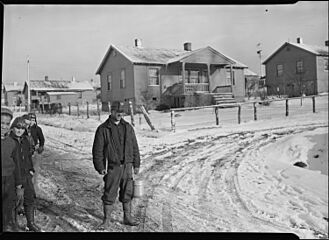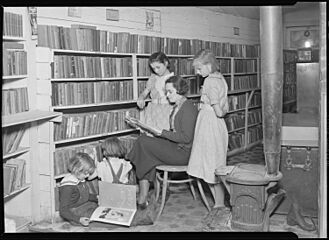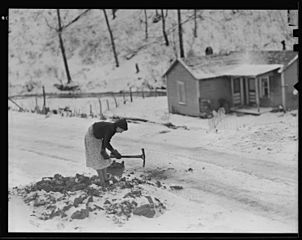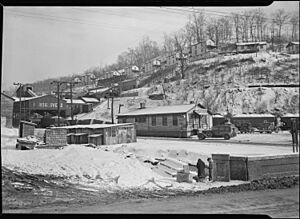Scotts Run, West Virginia facts for kids
Quick facts for kids
Scotts Run
|
|
|---|---|
| Country | |
| State | |
| County | |
| Elevation | 971 ft (296 m) |
| Time zone | UTC-5 (Eastern (EST)) |
| • Summer (DST) | UTC-4 (EDT) |
| GNIS ID | 2749914 |
Scotts Run is a group of thirteen small communities in Monongalia County, West Virginia, United States. It is located a few miles from Morgantown. In the early 1900s, the main industry here was coal mining.
Scotts Run became well known across the country during the Great Depression. This was because photographers and the relief efforts of First Lady Eleanor Roosevelt showed the difficult conditions people faced there. After the coal industry declined, fewer people lived in Scotts Run. However, the community is now working to bring in new businesses and promote its history.
Contents
Life Before Coal Mining
In the late 1800s, Scotts Run was mostly a farming area. Most people were American-born white farmers. They owned small pieces of land. The hills were not good for many crops. So, farmers mainly raised animals like sheep and cattle. Many farmers had to leave when coal companies started buying land. This was because land prices became too high.
A geologist named William Barton Rogers first studied the coal in the area in 1836. By 1902, two companies had bought land near Scotts Run. But there was no railroad to move the coal. This slowed down development. The Morgantown and Wheeling Railroad was finished in 1916. Then, demand for coal during World War I helped the area grow quickly.
The Coal Mining Boom
Scotts Run is part of the Fairmont Coal Field. This area sits on the Pittsburgh coal seam. This large coal seam was known as "the most valuable mineral deposit in the world." From 1917 to 1932, between World War I and the Great Depression, Scotts Run grew very fast. The bituminous coal industry developed quickly. Even with tough geography, this area's growth was one of the fastest in the nation. During these 15 years, at least 60 mines were active.
The growth also changed the people living in Scotts Run. The fast growth of the industry needed more workers. Many people moved into the area to fill these jobs. The population grew steadily and became much more diverse. Many new residents were immigrants and African Americans. By 1930, 13 percent of the people in Cass District were immigrants. Another 13 percent were African American. These new residents provided a strong workforce for the mines.
The development of Scotts Run happened at the same time as mechanization in the 1920s. New machines for loading coal and special locomotives replaced hand-loading and mules.
Scotts Run's biggest year was 1923. In that year, 37 mines from 33 different companies were working. But the industry had grown too much. It slowly declined from 1923 until the Great Depression began in 1929.
Scotts Run During the Great Depression
By 1932, the coal industry had mostly fallen apart. It was already struggling and could not handle the economic downturn after the Stock Market Crash of 1929. People in Scotts Run faced unemployment. They also dealt with unfair treatment based on their background and limited chances for education.
The widespread poverty in Scotts Run caught the attention of Protestant missionaries and the American Friends Service Committee in 1931. Later, in 1933, the Roosevelt administration sent relief workers. Scotts Run became a symbol of the hard times during the Great Depression. One writer called it a place of "human misery." The suffering in Scotts Run was likely similar to other coal towns in Appalachia. But it gained national attention because it was easy for photographers, reporters, and government officials to reach by car and train.
First Lady Eleanor Roosevelt also brought national attention to Scotts Run. Roosevelt first visited the mine camps in 1933. She returned several times and built lasting relationships. After the First Lady's visits, media and famous photographers like Walker Evans, Marion Post Wolcott, and Ben Shahn came too. Eleanor Roosevelt's involvement led to some families moving to Arthurdale. This was a new community in nearby Preston County.
Local groups also helped. The Scotts Run Settlement House, which started in 1922, gave a lot of help. Another example was Morgantown's First Presbyterian Church. They started a project for Scotts Run. This project opened The Shack. It was a community center that helped start a co-op for farming.
The 1930s saw a steady decrease in industrial jobs in Scotts Run. Many residents moved away. Some went to Arthurdale. Many young men joined the armed forces during World War II. They did not return to the area after the war ended.
Photography Project: Documenting Life
In 1936–37, photographer Lewis Hine took pictures of 14 industrial communities in America. Scotts Run was one of them. He did this for the National Research Project of the Works Progress Administration.
-
Unemployed miner in the abandoned Jere camp
Mining Accidents
The 13 mining communities along Scotts Run were known for being "disaster free" before World War II. The owners of the Christopher and Pursglove mines were especially careful about safety. They had even won awards for how safe their mines were. However, in 1942 and 1943, three mine accidents happened in Scotts Run within nine months. This was due to the dangers of mechanization and the pressure to produce more coal for the war.
On May 12, 1942, a locomotive cable short-circuited. At the same time, a ventilation door failed. This caused a methane explosion and collapsing roofs. Fifty-six men died in the blast.
On July 9, 1942, the nearby Pursglove No. 2 mine had an explosion. A roof fall caused a 550-volt trolley wire to drop onto the track. This ignited the air, which was full of methane and coal dust. The mine had used poor quality rock dust on its surfaces. This might have made the explosion worse. Twenty people were killed.
A third accident happened on January 8, 1943. A haulage locomotive caught fire. Eleven men were sent to put out the fire. They were suffocated by the smoke.
Scotts Run Today
Mine mechanization meant fewer workers were needed. So, the population of Scotts Run has been decreasing since the 1930s. New technologies also led to locomotives that used diesel engines. This reduced the need for coal. By the 1950s, the remaining mines in Scotts Run were combined into a few large areas. Most of these were controlled by the Consolidation Coal Company. Finally, the building of Interstate 79 cut through the Scotts Run area. This removed the last of the coal company housing.
Parts of the mining industry can still be seen around the region. These include rusty mine tipples. Also, acid mine drainage can be found in the streams and rivers.
Even though the population is much smaller than during the coal boom, residents are working hard. They want to save Scotts Run's history. They also want to bring new businesses to the area.


